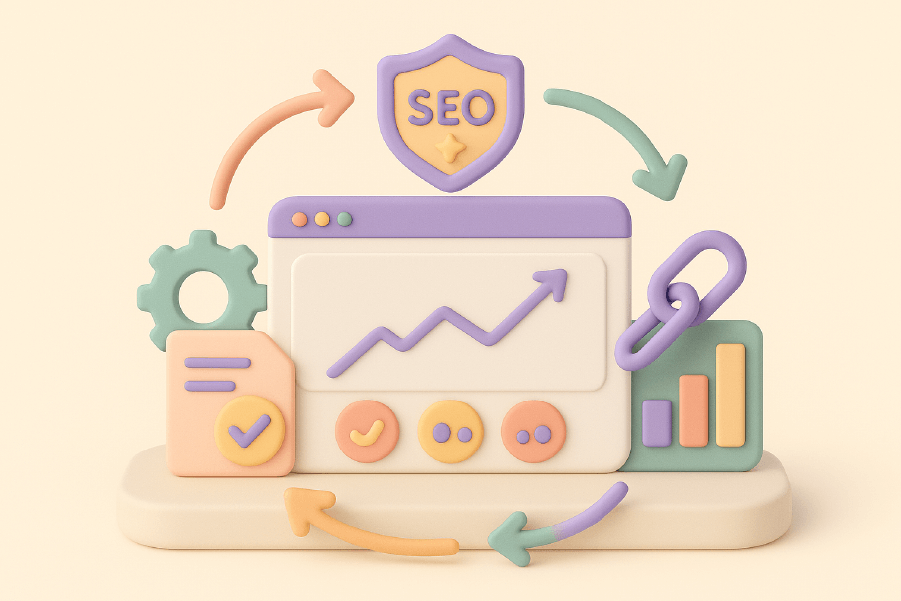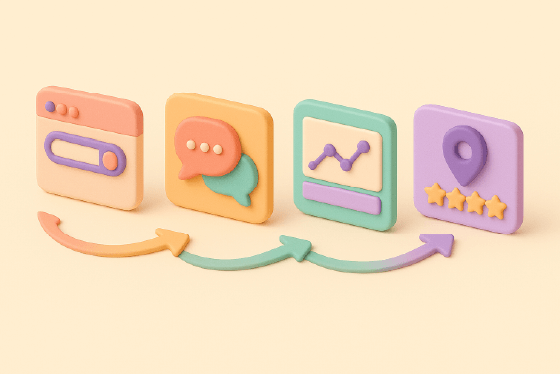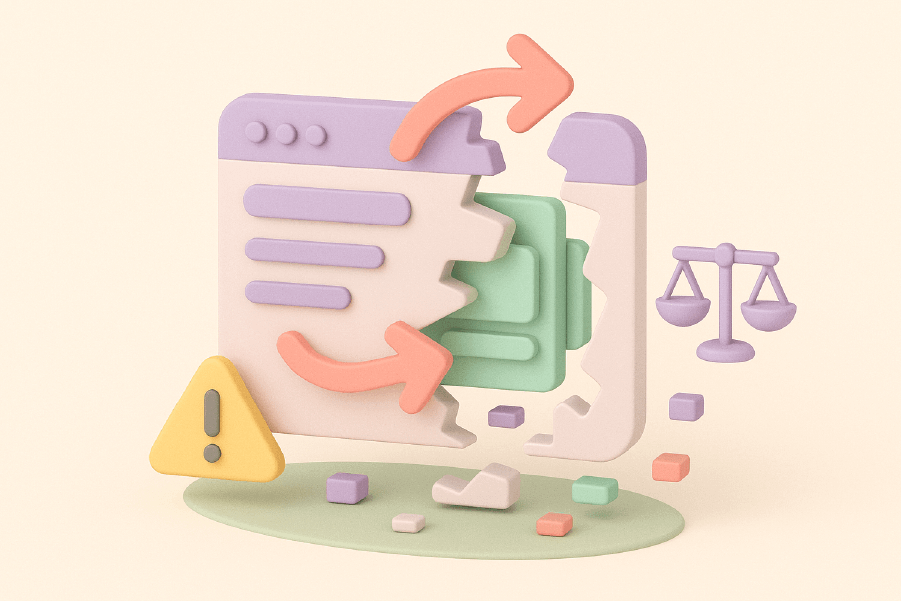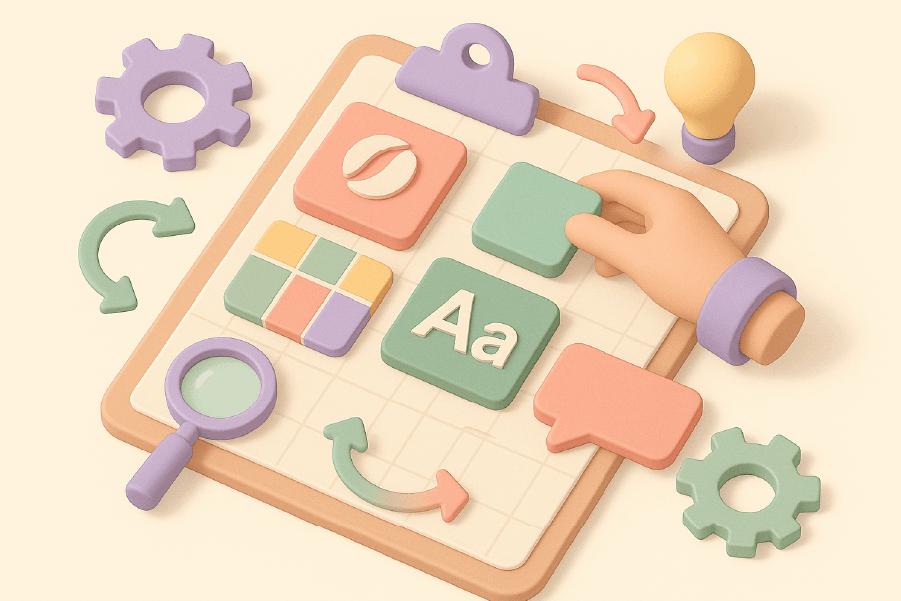A customer acquisition funnel is a structured process that guides potential customers from initial awareness to final conversion. By understanding this funnel and selecting the right customer acquisition channels, businesses can systematically convert leads into paying customers, driving growth and improving customer lifetime value. This article will explain each stage of the funnel and provide strategies to optimize every step, ultimately enhancing your customer acquisition efforts.
Introduction to Customer Acquisition
Customer acquisition refers to the process of bringing in new customers or clients for a business. It is a crucial aspect of business development and marketing strategies, as it ensures a steady stream of new customers to sustain and scale business growth over time. The importance of customer acquisition lies in its ability to drive revenue growth, increase customer lifetime value, and improve customer retention. A well-planned customer acquisition strategy can help businesses acquire new customers, retain existing ones, and ultimately achieve sustainable business growth.
In today’s competitive market, businesses must continuously attract new customers to maintain momentum and expand their reach. Effective customer acquisition strategies not only focus on gaining new clients but also on maximizing the value of each customer over their lifetime. By investing in customer acquisition, businesses can create a robust foundation for long-term success and adaptability in an ever-evolving marketplace.
Definition and Importance
Key Takeaways
- The customer acquisition funnel is a structured pathway that guides prospects from initial awareness to conversion, crucial for driving growth and maximizing customer lifetime value.
- Effective marketing strategies should be tailored for each stage of the funnel, focusing on attracting, engaging, and converting potential customers while also fostering loyalty.
- Common pitfalls in the customer acquisition process include misidentifying target customers and encountering conversion hurdles, which can be mitigated through analytics and continuous optimization.
Understanding the Customer Acquisition Funnel
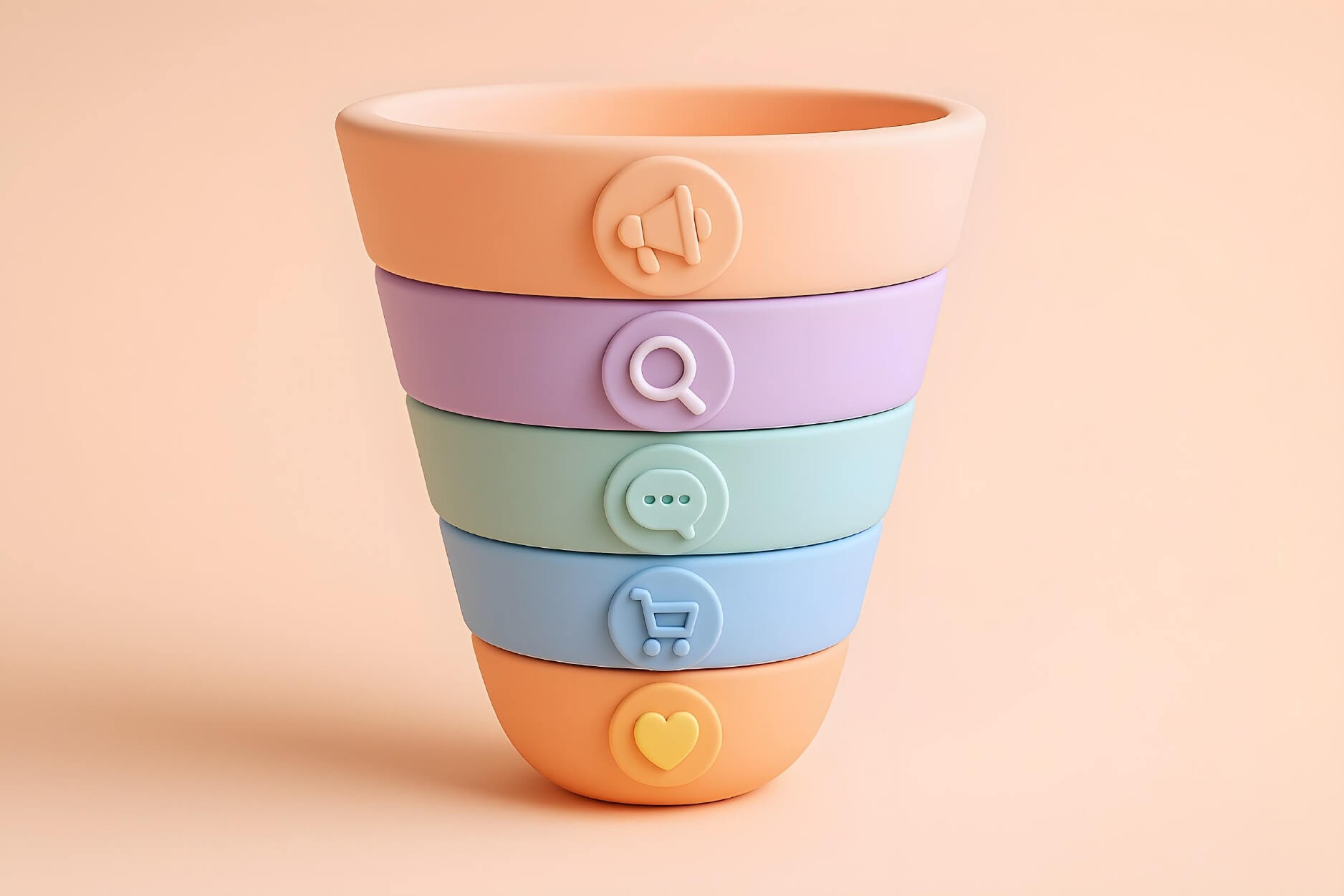
The customer acquisition funnel serves as a structured pathway that guides potential customers through their journey from initial awareness to final conversion. A customer acquisition funnel template provides a systematic approach to developing a structured process that turns potential leads into loyal customers. Understanding and optimizing this funnel allows businesses to systematically convert prospects into loyal customers, driving growth and enhancing customer lifetime value. The funnel is not just a theoretical concept; it’s a practical tool that helps visualize and improve the customer acquisition process. It aligns marketing efforts with business goals, ensuring that each step in the customer’s journey is strategically planned and executed.
The customer acquisition funnel primarily emphasizes attracting new customers. Additionally, it aims to convert those individuals into paying clients. Unlike the broader marketing funnel, which includes retention and loyalty, the customer acquisition funnel zeroes in on the critical task of acquiring new customers. This makes it an essential component of any successful customer acquisition strategy, as customer acquisition refers to the process of gaining new clients.
Refining each stage of the funnel significantly improves customer acquisition efforts, reduces customer acquisition costs, and maximizes customer lifetime value.
What is a Customer Acquisition Funnel?
A customer acquisition funnel provides a structured pathway for potential customers. It leads them from their first awareness of a product or service to the point of becoming paying customers. This funnel helps track how prospective customers move through various stages, providing valuable insights into their behavior and interactions. Mapping out this journey establishes a data-driven view of how prospects transition from one stage to the next, ultimately leading to conversion. Understanding the customer’s journey within this funnel can further optimize conversion rates by highlighting key touchpoints. A typical customer acquisition funnel outlines can enhance this process by clarifying each stage.
The effective customer acquisition funnel is essential for increasing conversions. It plays a crucial role in driving sales within competitive markets. It turns abstract customer journeys into actionable data, allowing businesses to measure customer acquisition efforts effectively.
End goals in customer acquisition often include acquiring a specific number of customers or achieving a targeted Customer Acquisition Cost (CAC). In essence, the customer acquisition funnel is a vital tool for any business looking to improve its customer acquisition strategy and acquire customers to drive sustainable growth.
Key Stages of the Customer Acquisition Funnel
The customer acquisition funnel consists of six key stages:
- Awareness
- Interest
- Consideration
- Intent
- Conversion
- Loyalty
Understanding these stages is crucial for mapping out the entire customer lifecycle, enabling businesses to enhance their marketing and sales processes.
Each stage plays a crucial role in guiding potential customers through their journey, and understanding these stages is essential for tailoring effective customer acquisition strategies.
During the awareness stage, the objective is to capture the attention of potential customers and inform them about your brand and solutions. This stage is all about broad outreach and creating initial awareness interest consideration intent.
In the interest stage, the focus shifts to nurturing curiosity and converting that initial awareness into deeper engagement. Here, prospects begin to seek more information about your offerings, visiting your website or researching your brand.
The consideration stage is where prospects evaluate your solution and compare it against competitors, focusing on interest consideration intent evaluation during the evaluation stage. This stage is critical for building trust and positioning your brand as a credible option.
The intent and conversion stages are where prospects show a high purchase intent and ultimately make a purchase. Finally, the loyalty stage focuses on retaining customers and encouraging repeat sales, driving long-term customer satisfaction and loyalty.
Identifying the Target Audience
Target Audience Analysis
Identifying the target audience is a critical step in the customer acquisition process. It involves analyzing demographics, interests, and behavior patterns to create customer personas that accurately represent the ideal customer. This analysis helps businesses understand their target audience’s needs, preferences, and pain points, enabling them to develop tailored marketing strategies that resonate with their audience.
By understanding their target audience, businesses can create effective content marketing strategies, optimize their marketing channels, and improve their overall customer acquisition efforts. Detailed customer personas allow businesses to segment their audience more precisely, ensuring that marketing messages are relevant and impactful. This targeted approach not only enhances engagement but also increases the likelihood of converting prospects into paying customers.
Effective target audience analysis involves gathering data from various sources, including market research, customer feedback, and analytics tools. By continuously refining their understanding of the target audience, businesses can stay ahead of market trends and adapt their strategies to meet evolving customer needs.
Crafting Tailored Marketing Strategies for Each Funnel Stage

To optimize the customer acquisition funnel, it’s essential to craft tailored marketing strategies for each stage of the typical marketing funnel. Mapping the funnel provides actionable insights that help optimize marketing campaigns and sales processes. Visualizing how prospective customers move through defined stages towards becoming loyal buyers helps create digital ecosystems that facilitate engagement at every stage.
Each stage of the customer acquisition funnel requires tailored content, brand messaging, and user experience design to effectively attract and convert users.
This approach ensures that marketing efforts are aligned with the specific needs of potential customers at each stage of their customer’s journey.
Awareness Stage Strategies
The awareness stage is all about capturing attention and generating interest. SEO can be utilized in content marketing to make your content discoverable by potential customers. Valuable, SEO-optimized content attracts prospects and establishes your brand as an authority in your industry.
Social media channels also play a crucial role in reaching potential customers and expressing your brand voice and values. Leveraging influencers in social media marketing can significantly increase your reach, as they demonstrate your products to their community of followers.
Various types of content, such as blogs, downloadable resources, and webinars, can be employed to engage potential customers at this stage.
Interest Stage Strategies
Once potential customers show interest, they seek more information about your brand. During this stage, providing targeted information and materials is crucial to nurture marketing qualified lead. The sales team and marketing teams can publish how-to guides, FAQs, and educational content related to growth marketing and lead generation to influence prospects.
Creating an email mailing list for interested individuals is an effective way to keep them engaged and informed about your offerings. Additionally, interactive tools can enhance engagement with potential customers during the interest stage. Addressing the prospect’s pain points in your prospecting messages is essential for effective engagement.
Consideration Stage Strategies
In the consideration stage, the focus is on building trust and positioning your brand as a reputable source in the industry. Creating high-quality content and showcasing authentic user feedback are crucial for establishing credibility. Using testimonials and user-generated content can significantly enhance your brand’s credibility and influence potential buyers’ decisions.
During this phase, prospects often compare offerings against competitors to assess fit, making it essential to highlight your unique value propositions.
Intent and Conversion Stage Strategies
The intent stage is where prospects show high purchase intent through actions such as adding items to the cart or visiting the pricing page. Creating retargeting campaigns can effectively encourage these prospects to finalize their purchases. Personalized email marketing can inform subscribers about special sales or discounts. This can entice new customers to take action. Automated email sequences can nurture prospects’ decisions by responding to buying signals, ensuring they receive timely and relevant information.
During the conversion stage, the focus is on making the purchase process smooth and frictionless for the customer. Effective marketing strategies include promoting specific deals or discounts and creating clear calls-to-action. Ensuring easy navigation and reducing onboarding steps can significantly improve conversion rates.
By optimizing these elements, businesses can enhance their overall improving customer acquisition efforts and drive higher conversions.
Loyalty Stage Strategies
The loyalty stage focuses on transforming new customers into repeat buyers. It also aims to create brand advocates. Follow-up communications, such as personalized emails and customer service excellence, are crucial in this stage. Implementing loyalty programs encourages repeat purchases and strengthens customer relationships.
Customer satisfaction plays a significant role in retaining customers, as positive experiences increase the likelihood of future purchases and influence customer behavior. A loyal customer base ensures recurring revenue and long-term business success, helping to retain customers and convert them into a paying customer, fostering customer loyalty, customer retention, repeat customers, and satisfied customers.
Content Marketing Strategies
Content Marketing Overview
Content marketing is a vital component of customer acquisition strategies, as it helps businesses attract and engage with their target audience. It involves creating and distributing valuable, relevant, and consistent content to educate and inform potential customers about a product or service. Effective content marketing strategies can help businesses establish themselves as thought leaders in their industry, build trust with their audience, and ultimately drive customer acquisition.
By leveraging content marketing, businesses can improve their search engine optimization (SEO), increase their social media presence, and enhance their overall marketing efforts. High-quality content that addresses the needs and interests of potential customers can significantly boost organic traffic and visibility. Additionally, content marketing can help businesses move potential customers through the stages of the customer acquisition funnel, from awareness to consideration, intent, and finally, conversion.
Creating a diverse range of content, such as blog posts, videos, infographics, and case studies, ensures that businesses can engage with their audience across multiple platforms and touchpoints. By consistently delivering valuable content, businesses can nurture relationships with potential customers, guiding them through their journey and ultimately converting them into loyal, paying customers.
Common Mistakes in the Customer Acquisition Funnel and How to Fix Them

Despite the best intentions, common mistakes can hinder the effectiveness of a customer acquisition funnel. Misidentifying target customers, ineffective messaging, poor channel selection, and encountering conversion hurdles are among the most prevalent issues. Failure to properly identify target customers and understand the existing customer base can lead to wasted marketing efforts and low conversion rates. Ineffective messaging often fails to resonate with the audience’s pain points, reducing engagement. Choosing the wrong marketing channels can also limit outreach and engagement. Conversion hurdles, such as friction in the onboarding process or payment methods, can deter potential customers from completing their purchases.
After the project has gone through various phases, it is now in the final stage of development.
Continuous monitoring of key performance indicators is essential for making agile adjustments to the acquisition funnel. Regular evaluations ensure alignment with evolving business goals and customer preferences.
Once improvements are identified, changes should be communicated with marketing, sales, and customer experience teams for coordinated implementation. By addressing these common mistakes, businesses can enhance their customer acquisition efforts and drive sustainable growth.
Misidentifying Target Customers
Creating detailed user personas helps businesses understand their target customers better, leading to more tailored marketing strategies. Understanding target customers through these personas allows for personalized marketing strategies that resonate with the audience.
When targeting customers, consider factors such as segmentation based on firmographic and demographic commonalities, current budget, growth focus, and significant company events. Not all customers are open-minded individuals, which can help bypass consumer inertia and focus on those actively seeking new solutions, including new customer opportunities and potential customer opportunities.
Ineffective Messaging
Effective messaging should resonate with the audience’s specific pain points to capture attention and drive engagement. Tailoring your marketing messages to address the unique challenges and needs of your target audience can significantly improve your marketing efforts.
Ensuring that your content is relevant, valuable, and aligned with the interests of your potential customers will make your messaging more impactful.
Poor Channel Selection
Choosing the right marketing channels is crucial for effective outreach and engagement. Referral marketing leverages existing customers’ trust to promote products, while paid digital advertising can generate traffic but may be costly and budget-dependent.
Continuously exploring new marketing channels ensures that you are reaching your audience effectively. By selecting the appropriate marketing channel, businesses can maximize their marketing efforts and drive customer acquisition.
Conversion Hurdles
Addressing customer experience is critical, as it directly influences conversion rates and can reduce drop-offs in the acquisition funnel. Directing more resources towards areas with the highest conversion potential and reducing friction at any stage of the funnel can enhance conversion rates.
Properly qualifying the buying committee before submitting a proposal is crucial. This practice helps to mitigate common failures during the consideration and conversion stages. By optimizing these aspects, businesses can improve their overall customer journey and drive higher conversions.
Leveraging Analytics to Optimize the Funnel

Leveraging analytics is essential for optimizing the customer acquisition funnel. Introducing a project management tool can significantly enhance this process by providing a structured approach to track and manage various stages of the funnel. Regular reviews of the funnel align it with business goals and customer needs, which is crucial for sustaining growth. Tracking performance metrics helps businesses understand their effective channels and refine their brand strategies. Tools like Factors provide a unified view of customer journeys, allowing for comprehensive analysis of the acquisition funnel.
A data-driven approach in customer acquisition focuses on gathering customer data. It also involves interpreting that data to effectively target potential prospects. By identifying bottlenecks and making data-driven decisions, businesses can enhance their overall effectiveness. Optimizing the funnel leads to identifying roadblocks, improving conversion rates, and enhancing the overall customer experience.
Effective resource allocation is guided by understanding which stages of the funnel significantly influence customer conversion. Data analytics plays a crucial role in monitoring and improving the customer acquisition funnel, ensuring businesses can adapt to changing conditions. By leveraging analytics, businesses can continuously refine their customer acquisition strategies and drive sustainable growth.
Implementing Analytics Tracking
Implementing a unified tracking system is necessary for gathering data from all marketing channels. Using a unified tracking platform is recommended for effective analytics tracking. This platform should combine data to provide a holistic view.
Metrics to track during the customer stages of the acquisition funnel include customer engagement, retention, and conversion rates. Analytics platforms are essential tools for tracking engagement in the customer acquisition funnel, providing valuable insights for optimization.
Analyzing Funnel Performance
The purpose of analyzing metrics in the customer acquisition funnel is to identify bottlenecks, assess efficiency, and make data-driven decisions. Key performance indicators (KPIs) are essential for evaluating the effectiveness of a customer acquisition funnel. Important KPIs include conversion rates, click-through rates, cost per acquisition, customer lifetime value, and retention rates.
Tools such as Improvado aggregate marketing data from various sources into a single dashboard for a unified performance view. Platforms like Factors provide cross-channel data compilation for a complete customer interaction picture. Identifying gaps or friction points in the funnel can help in refining customer acquisition strategies.
Rage clicks, which indicate frustration through multiple clicks in quick succession, can reveal potential issues in the customer journey.
Continuous Improvement Through A/B Testing
A/B testing in the customer acquisition funnel is essential for continuously experimenting with different strategies at each stage. The main goal of optimizing the customer acquisition funnel is to move prospects seamlessly toward conversion. A/B testing can optimize elements such as content, calls-to-action, page layouts, and forms.
Regular A/B testing is crucial for enhancing user experience and increasing the likelihood of customer conversion.
LIBRA 4 humans’ Approach to Building a Sustainable Customer Acquisition Funnel

We build digital ecosystems that support every stage of the customer acquisition funnel. Data analytics plays a crucial role in monitoring funnel performance and identifying areas for improvement. Analyzing historical data on customer volume helps predict future acquisition and growth trends. Accurate growth projections are essential for setting realistic goals. They provide a better framework compared to arbitrary targets. Unified dashboards provide quick identification of trends and comparison of effectiveness across channels and campaigns.
Their approach emphasizes the integration of SEO, inbound marketing, and trust-building tactics to attract and engage potential customers effectively. Leveraging data analytics allows businesses to continuously refine their customer acquisition strategies and adapt to changing market conditions. This holistic approach ensures that every stage of the customer acquisition funnel is optimized for sustainable business growth.
Integrating SEO and Inbound Marketing
Integrating search engine optimization with inbound marketing strategies enhances visibility and draws potential customers by aligning content with search intent. Implementing SEO alongside inbound marketing helps attract organic traffic and engage potential customers effectively.
By combining these strategies, businesses can create a seamless customer journey that drives customer acquisition and retention. Today’s customer acquisition funnels must integrate SEO, inbound marketing, and trust-building tactics to be effective.
Building Trust with Content and Social Proof
Social proof plays a significant role in the customer acquisition funnel by reassuring potential customers about product quality and brand trustworthiness. Incorporating social proof in content and sales messaging is a proven method to make prospects comfortable in the sales process.
Social proof comes in many different forms. These include online reviews, customer testimonials, case studies, and user-generated content. Building trust through content and social proof enhances customer acquisition efforts and drives higher conversions.
Long-Term Growth System
A well-structured customer acquisition funnel evolves over time to generate measurable returns on investment and support ongoing business expansion. Establishing a structured funnel enables businesses to adapt over time and measure ROI effectively, ensuring continuous growth.
Continuous testing and optimization allow the funnel to evolve, ultimately providing measurable returns on investment. A solid customer acquisition funnel is an evolving asset that ensures sustainable business growth and long-term success.
Summary
An effective customer acquisition funnel is crucial for driving business growth and ensuring long-term success. By understanding and optimizing each stage of the funnel, businesses can attract, convert, and retain customers more effectively. Leveraging tailored marketing strategies, addressing common mistakes, and utilizing analytics for continuous improvement are essential components of a successful customer acquisition strategy. A solid customer acquisition funnel is an evolving asset that provides measurable returns on investment and supports sustainable business growth.
Frequently Asked Questions
What is a customer acquisition funnel?
A customer acquisition funnel is a structured process that leads potential customers from initial awareness to making a purchase. Understanding this funnel can enhance your marketing strategies and improve conversion rates.
What are the key stages of the customer acquisition funnel?
The key stages of the customer acquisition funnel are Awareness, Interest, Consideration, Intent, Conversion, and Loyalty. Understanding these stages can help you effectively guide potential customers through their journey.
How can businesses optimize their customer acquisition funnel?
To optimize your customer acquisition funnel, focus on developing targeted marketing strategies for each stage, utilize analytics for insights, and engage in continuous improvement through A/B testing. This approach ensures a more effective and efficient funnel.
What are common mistakes in the customer acquisition funnel?
Misidentifying target customers and using ineffective messaging are common mistakes in the customer acquisition funnel, along with poor channel selection and not addressing conversion hurdles. To optimize your funnel, ensure you clearly define your audience and tailor your messages accordingly.


